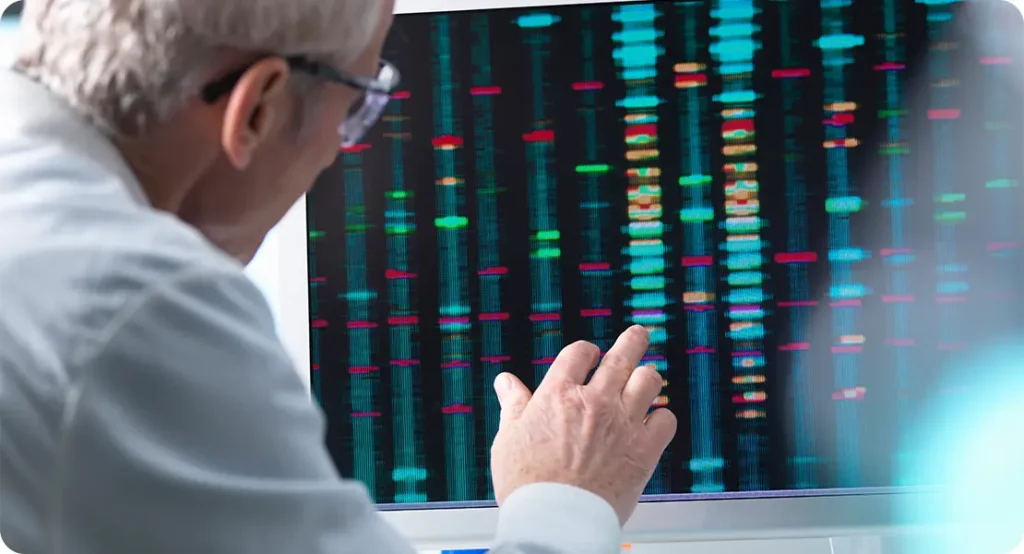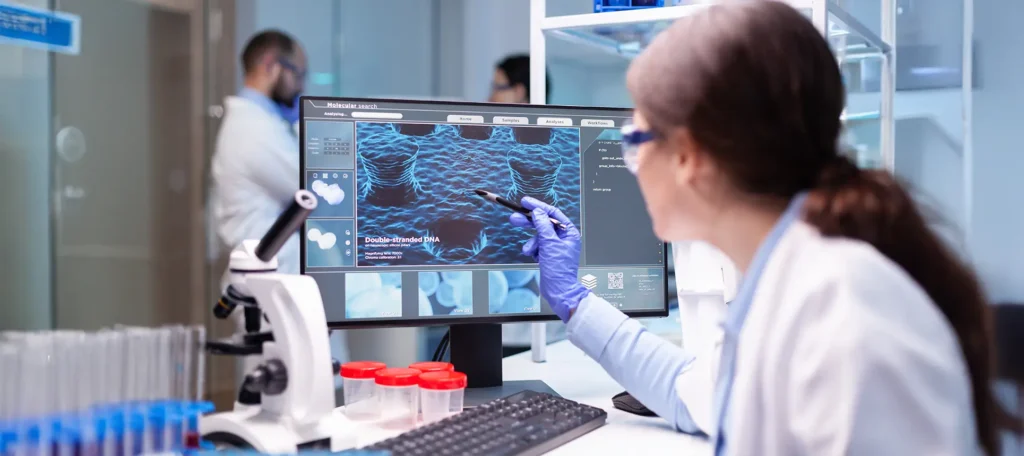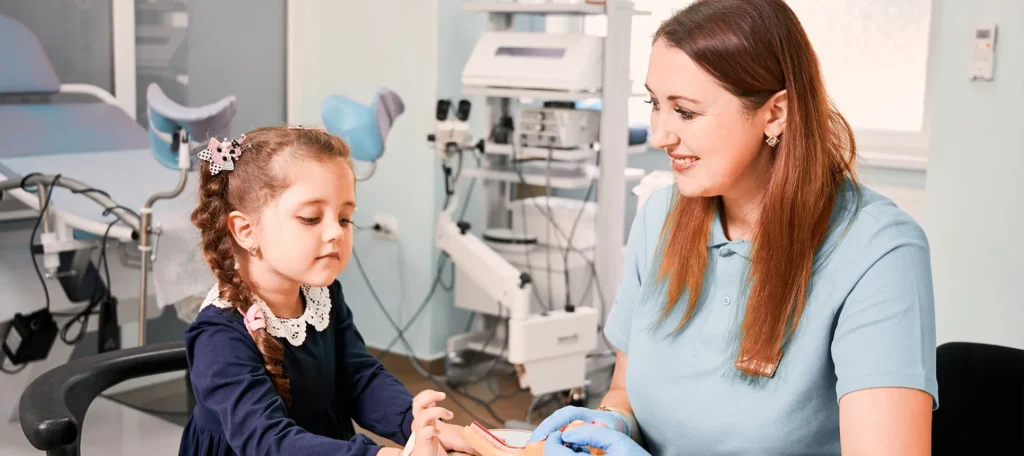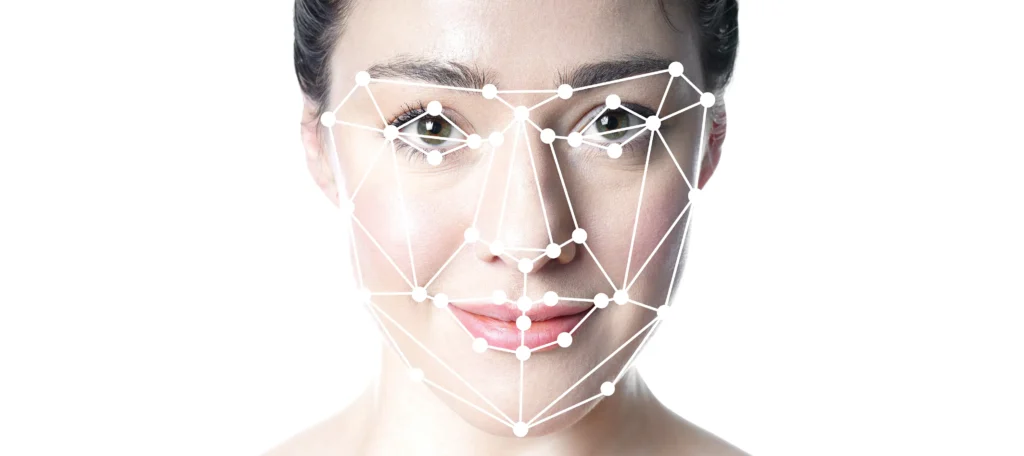Dermatopathology, the microscopic study of skin tissue, has long served as the cornerstone of accurate dermatological diagnosis. Traditionally, it involved analysing tissue samples to identify histological patterns consistent with specific skin diseases.
However, the rise of precision medicine—a model that tailors healthcare based on individual variability in genes, environment, and lifestyle—is reshaping how dermatopathology is practised. Advances in molecular diagnostics, genomic profiling, and immunohistochemistry are transforming tissue samples from simple histological slides into complex molecular maps. This shift not only improves diagnostic accuracy but also opens the door to personalised treatment plans that go beyond one-size-fits-all protocols.
As skin diseases like melanoma, psoriasis, and cutaneous lymphomas exhibit wide phenotypic and genetic variability, integrating precision medicine into dermatopathology is becoming essential for guiding optimal therapeutic decisions and improving patient outcomes.
The Evolution of Dermatopathology Techniques
Historically, dermatopathologists relied solely on haematoxylin and eosin (H&E) staining to evaluate skin biopsies under a microscope. While this remains a fundamental step, it often fails to capture the full biological picture of complex or rare diseases. Today, the use of advanced techniques such as direct immunofluorescence (DIF), next-generation sequencing (NGS), and gene expression profiling has expanded the scope of dermatopathology.
These methods provide insights into cellular and molecular mechanisms, allowing clinicians to identify mutations, biomarkers, and pathways involved in disease pathogenesis. For instance, differentiating between similar-appearing conditions such as cutaneous lupus erythematosus and dermatomyositis is now possible at the molecular level, aiding in accurate classification and risk stratification.
This evolution reflects a broader trend in medicine—moving from reactive diagnoses to proactive, predictive insights rooted in molecular science.
Integrating Genomic Data with Histopathology
One of the most profound advances in modern dermatopathology is the integration of genomic data into histopathological analysis. This fusion allows for the identification of gene mutations, copy number variations, and transcriptomic profiles directly from skin biopsies. For example, BRAF and NRAS mutations in melanoma can now be detected using NGS panels, offering crucial information not only for diagnosis but also for targeted therapy.

In inflammatory skin diseases like atopic dermatitis or hidradenitis suppurativa, gene expression signatures can inform which biological pathways are upregulated, guiding the choice of biologic drugs or small molecule inhibitors. This layered diagnostic model—combining traditional microscopy with cutting-edge genomic data—enables a level of diagnostic granularity that was unimaginable a decade ago. It empowers clinicians to make more informed decisions, reduce trial-and-error prescribing, and ultimately improve patient safety and satisfaction.
Impact on Skin Cancer Diagnosis and Management
Skin cancers, particularly melanoma, have significantly benefitted from the merging of dermatopathology with precision medicine. The ability to identify molecular subtypes of melanoma has revolutionised treatment strategies. For instance, the identification of BRAF V600E mutations enables the use of BRAF inhibitors, while detection of c-KIT or NRAS mutations informs other targeted therapies or clinical trial eligibility.
Moreover, molecular profiling of atypical melanocytic lesions helps differentiate between benign nevi, dysplastic nevi, and early melanomas—areas where histological ambiguity often leads to diagnostic dilemmas. This precision reduces the risk of over- or under-treatment.
Additionally, newer techniques such as digital spatial profiling allow pathologists to assess gene expression in the tumour microenvironment, providing insights into immune evasion mechanisms and predicting response to immunotherapies. As skin cancer cases continue to rise globally, precision dermatopathology plays a vital role in improving prognostic accuracy and therapeutic outcomes.
Personalised Approaches in Inflammatory Skin Disorders
While oncology has led the precision medicine charge, inflammatory skin conditions are now receiving similar attention. Disorders like psoriasis, eczema, lichen planus, and lupus erythematosus exhibit diverse clinical manifestations and treatment responses, often linked to underlying immune pathways and genetic predispositions.
By using tissue biopsies for cytokine profiling and immune cell mapping, dermatopathologists can identify disease subsets within these broader categories. For example, identifying a Th17-dominant signature in psoriasis may predict better response to IL-17 inhibitors, while a Th2-biased eczema patient may benefit more from IL-4/IL-13 blockers.
This tailored approach improves treatment efficacy, minimises side effects, and helps avoid unnecessary medication trials. As more biologics and targeted therapies enter the dermatological market, such personalised insights are no longer optional—they’re critical to delivering cost-effective, outcome-driven care.
Challenges in Adopting Precision Dermatopathology
Despite its promise, the integration of precision medicine into dermatopathology is not without challenges. High costs, limited access to advanced testing facilities, and a shortage of molecular pathology expertise can hinder widespread adoption—especially in resource-limited settings.
Furthermore, interpreting molecular results requires a multidisciplinary approach, often involving dermatologists, molecular biologists, and data scientists. Another concern is the risk of overdiagnosis or incidental findings, which can complicate clinical decision-making. There is also an ongoing debate about the standardisation and validation of molecular assays, particularly for non-malignant conditions.
Training the next generation of dermatopathologists to navigate this complex, data-rich landscape is vital. Educational programmes must evolve to include bioinformatics, genomics, and clinical decision support tools. Bridging these gaps is essential to ensure precision dermatopathology becomes an accessible and sustainable standard of care, not a luxury limited to tertiary centres.
Biomarker Discovery and Companion Diagnostics
Biomarkers are becoming pivotal in dermatopathology, particularly as companion diagnostics for emerging therapies. These molecular indicators—ranging from genetic mutations and protein expressions to epigenetic signatures—offer a window into disease activity, progression risk, and treatment responsiveness.
For instance, PD-L1 expression in melanoma not only informs prognosis but also guides eligibility for immune checkpoint inhibitors. In chronic inflammatory conditions, levels of biomarkers such as IL-23 or interferon-related genes are being explored as predictive tools for biologic efficacy. The ability to detect these markers in formalin-fixed paraffin-embedded (FFPE) tissue via multiplex assays allows their integration into routine biopsy workflows.

This practical compatibility with existing diagnostic pipelines is critical for clinical adoption. As pharmaceutical companies increasingly develop therapies linked to specific biomarkers, dermatopathologists play a vital role in ensuring the right patients receive the right treatments at the right time, reinforcing the centrality of tissue-based diagnostics in the era of precision medicine.
Rare and Undiagnosed Dermatological Disorders
Precision dermatopathology is also offering new hope to patients with rare or previously undiagnosed skin conditions. Traditional methods often fall short when faced with diseases that mimic more common disorders or exhibit atypical histological features. Whole exome sequencing (WES) and RNA sequencing have enabled clinicians to uncover novel genetic syndromes and inherited dermatoses that were once diagnostic enigmas.
For example, the discovery of CARD14 mutations has helped reclassify some previously misdiagnosed forms of psoriasis, leading to more appropriate management. In cases of inherited epidermolysis bullosa or other blistering diseases, molecular confirmation not only assists in diagnosis but also in family planning and prenatal counselling.
For such patients, a precise diagnosis can mean the difference between years of uncertainty and targeted intervention. This capability underscores how dermatopathology, when expanded beyond the microscope, becomes a powerful diagnostic engine for some of the most challenging cases in dermatology.
Ethical and Data Privacy Considerations
As tissue samples increasingly yield genomic and other high-dimensional data, ethical concerns around data privacy, informed consent, and secondary use become pressing. Dermatopathology departments must navigate complex issues around patient autonomy—particularly when incidental findings or germline mutations unrelated to the original diagnosis are uncovered.
For example, a skin biopsy performed to assess a suspicious rash may inadvertently reveal mutations suggesting hereditary cancer syndromes. The implications of such findings require thoughtful communication, access to genetic counselling, and clear institutional policies on data governance.
Furthermore, as AI and machine learning models are trained on histopathological datasets, ensuring diversity in these data pools is essential to prevent algorithmic bias. Dermatopathology must align with broader efforts in precision medicine to promote ethical transparency and equitable care, especially as genomic data becomes central to routine diagnostics and treatment planning.
Collaboration Across Specialties
The integration of precision medicine into dermatopathology has fostered stronger collaboration between disciplines. Dermatologists, dermatopathologists, molecular geneticists, oncologists, and bioinformaticians now work together in multidisciplinary teams to interpret results and design optimal care pathways.
This shift enhances not only diagnostic accuracy but also treatment alignment and patient education. For example, tumour boards reviewing complex cutaneous lymphomas now routinely incorporate genomic and immunophenotypic data alongside histology to determine the best therapeutic route. Likewise, in academic settings, collaborative research initiatives are developing disease-specific databases that combine clinical, histopathological, and molecular insights—fuelling innovation and improving guidelines.
As the field advances, such cross-specialty partnerships will become increasingly essential. Dermatopathology is no longer an isolated end-stage of the diagnostic journey but a dynamic interface where science, data, and clinical care converge to deliver truly personalised medicine.
Role in Drug Development and Clinical Trials
Dermatopathology is increasingly influencing the design and execution of clinical trials, especially in the development of targeted and biologic therapies. By providing tissue-level confirmation of disease subtype, cellular infiltrates, or biomarker expression, dermatopathologists help define patient eligibility and stratification for trial enrolment.
This ensures that therapies are tested on biologically relevant populations, improving the chances of demonstrating efficacy. Moreover, skin biopsies taken before and after treatment provide measurable data on drug response at the histological and molecular levels. For instance, assessing epidermal thickness, immune cell activity, or expression of inflammatory markers can offer early evidence of treatment impact, often before clinical signs change.
These objective metrics improve trial accuracy and reduce placebo noise. In the age of precision medicine, dermatopathology’s role in trials is no longer limited to safety monitoring—it now shapes the very foundation of therapeutic innovation and regulatory approval.
Paediatric Dermatopathology and Genetic Insights
Precision dermatopathology is making particularly significant strides in paediatric dermatology, where many skin disorders are congenital, hereditary, or syndromic in nature. Children presenting with unusual rashes or persistent dermatoses often undergo a diagnostic odyssey, as clinical signs alone may be insufficient for diagnosis.

Tissue-level evaluation combined with genetic sequencing has led to better identification of genodermatoses such as ichthyosis, epidermolysis bullosa, and various mosaic skin disorders. In some cases, skin biopsies have revealed somatic mutations that explain segmental or linear disease distributions—findings impossible to detect through blood tests alone. Early, precise diagnosis in paediatric cases enables timely intervention, genetic counselling for families, and the opportunity for inclusion in gene therapy trials.
As technologies like single-cell RNA sequencing mature, the ability to understand disease at the cellular level in paediatric populations is likely to enhance our knowledge of developmental dermatopathology and improve care trajectories from infancy onward.
Digital Pathology and Global Access to Expertise
The rise of digital dermatopathology is not just a technological convenience—it’s a democratising force in global healthcare. Scanning biopsy slides into high-resolution digital files allows dermatopathologists to consult across geographic boundaries, expanding access to sub-specialist expertise.
This is especially impactful for patients in remote or under-resourced areas, where local access to dermatopathology services may be limited or non-existent. Furthermore, digital workflows facilitate more rapid turnaround of second opinions, multidisciplinary case reviews, and integration with AI tools that assist in diagnostic triage.
Some platforms now combine histology, immunohistochemistry, and genetic test results in unified, interactive reports, making complex data more navigable for clinicians.
As digital infrastructure becomes more robust and affordable, dermatopathology is likely to become increasingly networked and collaborative—improving equity and consistency in diagnostic standards worldwide.
Training the Next Generation of Dermatopathologists
With the discipline evolving rapidly, dermatopathology training must also adapt to incorporate the skills needed for this new precision-focused era. Modern trainees are expected not only to master traditional microscopy but also to understand molecular diagnostics, bioinformatics, and the clinical implications of genetic test results.
This shift requires updated curricula that include exposure to NGS platforms, digital pathology software, and multidisciplinary team discussions. Equally important is fostering critical thinking around interpreting complex datasets and recognising the limitations of emerging technologies.
Hands-on collaboration with clinical dermatologists and geneticists during training builds the translational mindset necessary for precision diagnostics.
As the field becomes more data-driven, dermatopathologists will also need to engage with AI tools and contribute to their development by providing annotated training datasets. These evolving competencies are essential to ensure the future workforce is equipped not just to read slides, but to lead innovation in skin diagnostics.
Public and Patient Engagement in Precision Dermatology
As dermatopathology integrates more closely with precision medicine, engaging patients in the process is crucial. Patients are increasingly aware of genomic testing and personalised care, yet may not fully understand the role tissue samples play in guiding treatment decisions. Transparent communication around why a biopsy is recommended, what information it can provide, and how molecular findings influence care builds trust and shared decision-making.
Moreover, involving patients in decisions about data use, biobanking, or research participation ensures ethical standards and empowers them as partners in their care journey. Public engagement initiatives can also help demystify dermatopathology and precision medicine, correcting misconceptions and reducing anxiety around skin biopsies and genetic testing. Ultimately, a more informed patient base supports not only better outcomes but also broader acceptance of the technological advances that are reshaping how we understand and treat skin disease.
The Role of Artificial Intelligence in Diagnostic Accuracy
Artificial intelligence (AI) is poised to play a transformative role in dermatopathology by enhancing diagnostic speed, consistency, and accuracy. Machine learning algorithms trained on thousands of annotated histological slides are now capable of recognising complex patterns and subtle anomalies that may be overlooked by the human eye—especially in high-volume clinical settings.
These systems can assist in differentiating between benign and malignant lesions, classifying inflammatory dermatoses, and even predicting molecular markers from standard H&E images. For example, AI models have demonstrated promise in identifying early melanoma features or predicting BRAF mutation status based on tissue morphology alone. While AI is not a replacement for expert interpretation, it offers a valuable second opinion, particularly in ambiguous cases or resource-limited environments.

As these technologies continue to improve, integrating AI tools into dermatopathology workflows could further democratise access to precision diagnostics and reduce diagnostic disparities, ultimately enhancing care quality across diverse populations.
Future Outlook: AI, Digital Pathology and Beyond
The future of dermatopathology lies at the intersection of artificial intelligence (AI), digital imaging, and big data. AI algorithms are being developed to assist in pattern recognition, lesion classification, and even predict molecular alterations from routine H&E slides. These tools promise to speed up diagnoses, reduce human error, and extend expert-level interpretation to underserved areas.
Meanwhile, digital pathology platforms enable remote sharing of high-resolution slides, fostering global collaboration and second opinions. As data from genomic and histological sources continue to grow, machine learning models can help synthesize this information into actionable clinical insights. Additionally, multi-omic approaches that integrate proteomics, metabolomics, and transcriptomics with histology are poised to redefine what we consider a “diagnosis.”
These technologies will not replace dermatopathologists but will amplify their capabilities, making their work more precise, efficient, and impactful. As precision medicine evolves, dermatopathology will remain a central pillar in delivering personalised skin care rooted in scientific rigour and technological innovation.
Final Thoughts: Precision Starts at the Cellular Level
Dermatopathology is undergoing a remarkable transformation—evolving from a purely morphological discipline into a dynamic hub of molecular insight and clinical relevance. As precision medicine continues to drive innovation, the ability to interpret skin tissue at both the microscopic and genomic levels is redefining how we diagnose, monitor, and treat dermatological conditions. This shift is not just technological—it’s philosophical.
It’s about moving from generalisations to individualisation, from reactive care to proactive strategies. For clinicians, researchers, and patients alike, the message is clear: the future of dermatology lies in the details.
And those details begin in the lab, on a slide, under a microscope—but now powered by the full force of genetic and data-driven insight. In this new era, dermatopathology doesn’t just support precision medicine—it enables it.
References:
- Abbas, O. and Mahalingam, M., 2009. Diagnostic value of immunohistochemistry in dermatopathology. Journal of Cutaneous Pathology, 36(10), pp.1009–1021. Available at: https://onlinelibrary.wiley.com/doi/full/10.1111/j.1600-0560.2009.01353.x
- Lebas, E., Scolyer, R.A., Weynand, B., Cerroni, L. and Koelzer, V.H., 2021. Artificial intelligence in dermatopathology: an update. Virchows Archiv, 479(1), pp.13–23.
- Yazdan, P., Tripathi, R., Mancini, M. and Pincus, L., 2022. The role of dermatopathology in the era of personalised medicine. Clinics in Dermatology, 40(1), pp.1–7.
- Geller, B.M., Johnson, C.D., Geller, A.C., Miller, D.R., and Brooks, K.A., 2014. Accuracy of dermatopathologists in diagnosing melanocytic lesions: impact of diagnostic tools. Archives of Pathology & Laboratory Medicine, 138(10), pp.1250–1256.
- Reuschenbach, M., von Knebel Doeberitz, M., and Wentzensen, N., 2011. A tissue-based approach to precision diagnostics in cancer: current status and future directions. Journal of Pathology, 223(2), pp.233–244. doi:10.1002/path.2805
